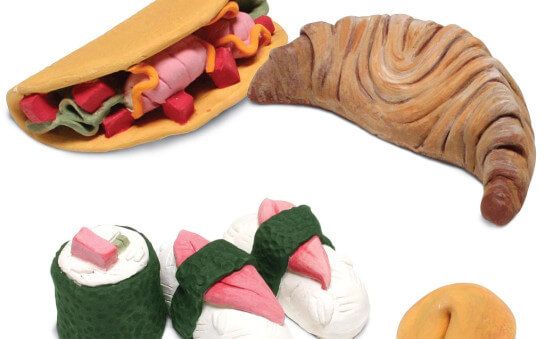Lanterns To Light

Create a textured slab-built lantern.
Fire can create tools, transform muddy clay into pottery, and light the darkness. Lanterns were developed to protect a candle’s flame from wind and to prevent flickering. This ensured better lighting and helped make light more portable. Historically lanterns have been also used for signaling (like a light house) or to generate an ambience of warmth. This simple rectangular slab form is enlivened by symbolic textures and cut-outs that reference architecture, nature or various cultures. Before starting, read more about Uluru in the Outback, the Moorish Alhambra, East Asian gardens or other subjects to determine your design. Cut-out forms, bases, and lid finials should be designed to enhance your concept and form.
Supplies List
- Hardwood Pony Roller
- Versa Clay No.20 Moist
- White Art Clay Moist
- Slab Roller
- Texture Molds
- Fettling Knife
- AccuAngle
- Scoring Tool
- Hardwood Modeling Tools
- Glaze Brushes
- Amaco Low-Fire Glazes
- Amaco Velvet Underglazes

Make slabs
Roll slabs between 1/4 and 3/4 inches thick. Smooth with rubber rib.
Add Texture
Lay smoothed side down on textured plaster mold, then press with small sand bag using a firm rolling motion from center to edges. Use Pony Roller to press clay further into mold.
Remove from plaster mold
Remove slabs from mold before cutting.
Cut Slabs
Measure or use template to cut four rectangles (4" x 8") and one square (4" x 4") from textured clay. Or use the AccuAngle tool to “miter” the 8" length on the untextured side.
Let slabs set up
Let slabs set up by allowing to dry evenly while flat until barely leather hard. Clay should be soft enough to join, but firm enough to stand up without support.
Miter edges
Use knife to cut the inside edges (untextured side) at a 45° angle (miter) of the 8" sides of the rectangles. If you used the AccuAngle in Step 4 you can skip this step.
Score and slip
Score seams, and use water, slip, or vinegar to join walls to base with textured sides facing out.
Join slabs
Use a wood tool to “stitch” the seams on the inside of the form and press a thin damp snake of clay into each seam. Smooth inside seams.
Edges
With the sides mitered, seams are invisible and the texture goes all the way to the corners of the lantern. Score, slip, then gently press edges together without blending or “erasing” the texture.
Lid
Cut triangles from textured slab approximately 4 1/4" bottom, 4 1/2" sides. Miter sides of triangles (not bottom) and join. Use constructed lantern to hold lid as you join the parts.
Building Lid
Score, slip, and use a coil of clay to join seams. The coil will also help to fill any gaps between the slabs.
Lid Flange
Make a slab flange to sit down inside the lantern and join to the lid.
Finial or lid handle
To add a decorative element, make a finial for the lid which is consistent with your design. Either use a press mold or hand build. Join securely by scoring and slip.
Cut Openings
Use a sharp knife or hole cutter to cut openings in the sides and lid of the lantern. Make sure to leave at least 1/2 inch uncut around corners to maintain the structural integrity of the lantern.
Clean
Once the lantern is leather hard, use rubber scrubber or slightly damp sponge to soften the edges of the cut openings.
Dry
Allow to dry slowly and completely. Bisque fire to Cone 04.
Glazing
Brush 3 coats of desired glaze onto Cone 04 bisque. Taper off the application of the glaze near the bottom. Do not glaze inside of lid or edges that will touch.
Glaze fire to Cone 05. Do not fire with the lid on the lantern or they will stick together.
Optional Project
This project can be simplified by leaving out the lid and scalloping the top edge of the lantern. For a smaller project, or for younger students, a candle-holder can be made with one slab, 11" x 3", made into a cylinder. The textured clay can be wrapped around a cardboard tube for stability. Score, slip, and join the parts the same way as the lantern. When the clay is firm to the touch, shapes can be cut out for a candle-holder.

